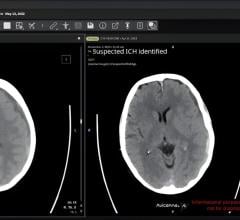
Greg Freiherr has reported on developments in radiology since 1983. He runs the consulting service, The Freiherr Group.
BLOG: How Healthcare Can Benefit From the Cloud

Image courtesy of Pixabay
If applied well, the cloud can boost efficiency, cost savings, healthcare delivery, even security. So compelling are its advantages that the cloud is already being widely used by many healthcare facilities.
As of late 2017, a KLAS survey of healthcare organizations found that 70 percent of survey respondents had moved at least some applications or IT infrastructure to the cloud. Among the top reasons cited were reduced capital outlay or costs; enhanced service or capabilities; improved system performance; and improved security.
At the Healthcare Information and Management Systems Society (HIMSS) 2018 annual meeting, Eric Schmidt, former Google CEO, advised attendees to “run to the cloud. Don’t stop, don’t walk, don’t think about it — just run.”
Caution Advised
But not all cloud solutions are equal. Adoption of the cloud, therefore, should be done cautiously. Even the term, “cloud,” can be confusing.
This term applies to any web-related or internet-based technology, according to the Healthcare Information and Management Systems Society. In this white paper on the subject, HIMSS describes three different service models:
- Software as a service, which primarily provides business applications;
- Platform as a service, which is intended to help programming; and
- Infrastructure as a service (IaaS), which provides processing, storage, networking and “other fundamental computing resources.”
Combining People and Machines
An advanced form of IaaS brings together human and machine intelligence, a combination that Imalogix uses “to learn how your business is going and figure out how to help you get better,” said company founder John Heil.
The Imalogix neural network identifies trends and patterns — from best practices to root causes of unwarranted variability — “and delivers those to our team of data scientists and imaging experts for review,” said Heil who currently serves as the Imalogix CEO. From these findings, Imalogix data scientists train the system to deliver to users what the company describes as “new learnings” through “simple and intuitive dashboards,” comprised of KPIs (key performance indicators). These may be accompanied by “alerts” sent to customers, alerts that might, for example, involve a dose threshold being exceeded during a CT exam.
“We deliver actionable deep learning insights that are unique to our individual customers’ needs,” Heil explained. The objective, he said, is to “highlight for our customers steps to take that will result in more consistent, efficient and predictable imaging.”
In addition, Imalogix automatically compares customers’ performance to that of their peers, as well as performers throughout their own enterprises. It allows Imalogix customer to drill through the data to assess individual hospitals, departments, scanners and even operators.
The comparative analyses achieved through these comparisons can lead to the identification of “best practices,” which are then detailed for users. These can increase efficiency and, ultimately, improve productivity, if they are applied by the facilities or enterprises. After their application, Imalogix also analyzes customer performance to ensure that the practices have been effectively applied. “We tell you day-to-day how you are doing,” Heil said.
Image quality, for example, may be defined by the optimal doses of radiation needed to produce diagnostically accurate images. This may vary according to the disease, as well as the size and age of the patient. An Imalogix customer may develop and apply a set of protocols to achieve this.
If used across an enterprise or facility, those protocols may increase exam consistency. Based on data acquired through the cloud, Imalogix can identify variances in the execution of protocols by scanner type and technologist, and how enterprises, facilities and their staffs are doing compared to past performance and to that of peer organizations — from consistency and efficiency perspectives. Customers then receive information about how and where they can make improvements that might help them perform better.
How Else the Cloud Matters
The cloud can be used to lessen the load that typically is placed on IT staff by providing — and maintaining — the IT infrastructure of a facility or enterprise. Efficiency may be bolstered further by simultaneously upgrading software.
This scalability holds down the outlay of capital on-site for unneeded staff and redundant equipment. Cloud networks may offer the further advantage of disaster recovery. Through distributed processing possible with the cloud, deep learning algorithms that come from artificial intelligence may be developed and used efficiently.
And, just as cloud staff can improve operational efficiency, so can they boost cyber security. “Staff engineers are constantly working to maintain (network) integrity,” Heil said. “This requires a massive expense that just can’t be made by a small community hospital or even an enterprise.”
In a presentation at HIMSS 2018, Schmidt noted that security in the cloud is better than can be provided by individual on-site operations. “We now have — much safer than your data center, much more compliant than your data center and much easier to use — cloud-based servers within our industry,” he told attendees, noting that Google and its competitors have such offerings. Heil asserted that the same is true for Imalogix.
Where Big Data Fits
The accumulation of in-depth data from multiple sites, often characterized as “Big Data,” enables the development of smart algorithms. This is so, just as the cloud makes big data and predictive analytics possible. Algorithms developed by Imalogix to perform predictive and comparative analytics, for example, are continuously learning from the data.
While it may not be the perfect means for managing patient care and data, the cloud provides access to information that can improve patient care, according to the University of Illinois at Chicago, which provides some of the nation’s most innovative health information management programs.
But the cloud's value will only be further realized by continuous innovation.
Greg Freiherr is a consulting editor to Imaging Technology News. Over the past three decades, he has served as business and technology editor for publications in medical imaging, as well as consulted for vendors, professional organizations, academia, and financial institutions.
Editor’s Note:
This is the first blog in a four-part series about the value of the cloud in today’s healthcare.
Related Content:
How Two Providers Use The Cloud To Prepare For Disaster
The Changing Future of Innovation
WEBINAR: Realizing the Value of Enterprise Imaging: 5 Key Strategies for Success


 December 01, 2025
December 01, 2025 









